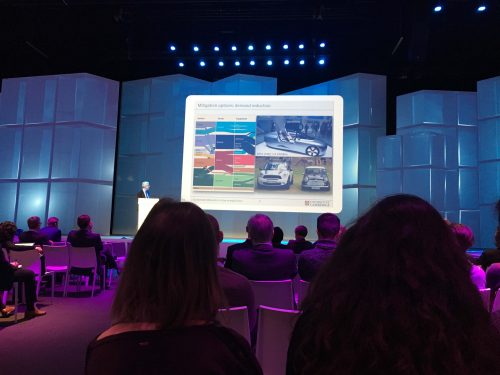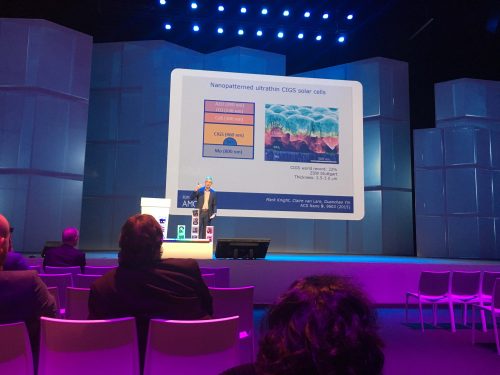On tuesday the 13th of december I went to the Meeting Materials conference organised by the Material Innovation Institue (the Mi2). The Mi2, long established in the Netherlands and with a growing profile in Europe, is an enabler in materials innovation. Their core mission is to support industry and society in finding solutions for materials-related questions in product development and production processes.
Each year M2i organises Meeting Material, an annual event about the increasing importance of the Dutch and European Materials ecosystems. This year, participants, represented from SME’s to renowned industial manufacturing companies, and professors from Dutch Technical Universities joined the meeting. The program consisted of presentations and discussions on interesting topics like Circular economy, 3D printing, Smart production and Functional coatings and surfaces.

Professor Allwood worked for 10 years for Alcoa and from 2000 in Cambridge. In parallel with developing new manufacturing technologies for metals, he has built up a research group looking at environmental systems and production.
From 2009-13 he held an EPSRC Leadership Fellowship, to explore ‘material efficiency’ as a climate mitigation strategy – delivering material services with less new material. This led to publication in 2012 of the book “Sustainable Materials: with both eyes open” which can be read online at www.withbotheyesopen.com, listed by Bill Gates as one of his top six reads of 2015. A revised edition “Sustainable Materials: without the hot air” has now been released.
The way he presented the data was to the point with some British sense of humor. It was very interesting to see his perspective on human behavior around sustainable living and his research about the future perspective of recycling made me think; should I within this project invest in a material that contributes to a healthy planet or not? I am not going to mass produce, but on the other hand I wonder if it will be that big of a challenge if I do.

Professor Polman is scientific group leader at the FOM Institute AMOLF in Amsterdam, the Netherlands, where he heads the Program “Light management in new photovoltaic materials”. He is professor of Photonic materials for photovoltaics at the University of Amsterdam.
In his presentation Professor Polman showed the importance of investing in the raw atoms to come up to new molecules that could become an addition to the silicium solar panels we have right now. This reminded me of my own research idea on material combinations suitable for my smart textile. Next to that he talked about the future of solar panels become thinner. He envisions all the different types of solar sells layered on top of each other forming a flexible thin material which could wear different colors. This could also become interesting for smart textiles when applying energy sources on a garment.

